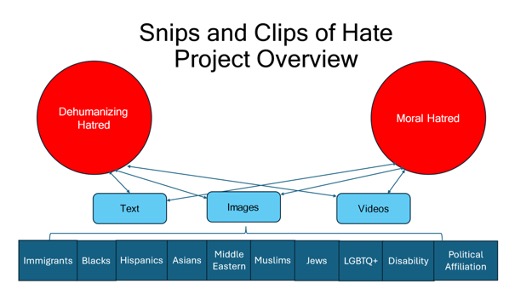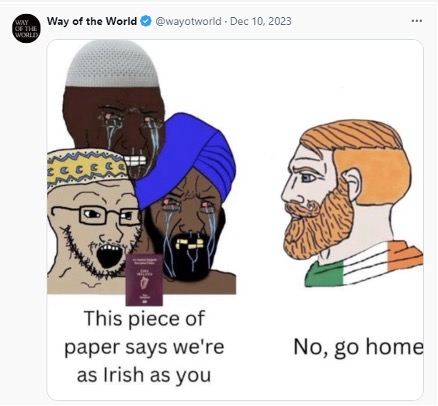
It often feels like hate is everywhere on social media. As dozens of scholars have documented—and as many of us have sadly experienced—hate has flourished in the digital ecosystem. But where does it actually come from? While past studies have identified the dissemination of hate on social media, researchers have usually assumed that digital hate is a monolithic phenomenon, and that its spread is a uniform process. Our project, “Snips and Clips: Dehumanizing Hatred and Moral Hatred on Twitter/X” is advancing research about hatred on social media by answering two questions: (1) What different types of hate are communicated through social media?; and (2) Do different types of communication (text, imagery, video) spread different types of hate on social media?
To answer the first question, “Snips and Clips” is identifying, comparing, and contrasting two types of online hatred:dehumanizing hatred and moral hatred. In a recent study, Nick Haslam and Sean C. Murphy (2020) differentiate “dehumanizing” hatred, which “functions to delegitimize enemies by stripping them of their humanities and thereby licenses aggressive actions” from “moral” hatred, which involves “punishing people for violating a moral rule…harm(ing) complete human beings who are capable of deserving blame, experience suffering, and understanding its meaning.” Hateful discourse based on dehumanization, therefore, strips targets of their personhood and presumes they are somehow “subhuman,” whereas moral hatred is framed as a virtuous and just response to actions that people took even though they knew it was wrong. To better understand how these two types of hate circulate on social media, we collect data on hateful Twitter/X posts to determine the degree to which hatred targeting specific groups manifests as dehumanizing or moral hatred online.
To answer the second question, “Snips and Clips” is comparing hateful posts that consist of texts, images, videos, and combinations thereof to see if specific types of hatred tend to be communicated in different ways. Taking Marshall McLuhan’s famous observation that “the medium is the message” (1964) to heart, we believe that looking at the degree to which dehumanizing and moral hatred are communicated in different ways on Twitter/X will give us a meaningful perspective on how these two basic forms of hatred differ, and, we hope, help us find new mechanisms for staunching the flow of online hate speech.
References
Haslam, N. & Murphy, S.C. (2020). Hate, Dehumanization, and “Hate.” In R.J. Sternberg (ed). Perspectives on Hate: How It Originates, Develops, Manifests, and Spreads. Washington, D.C.: American Psychological Association. pp. 27-41
McLuhan, M. (1964). Understanding Media: The Extensions of Man. Toronto: University of Toronto Press.



